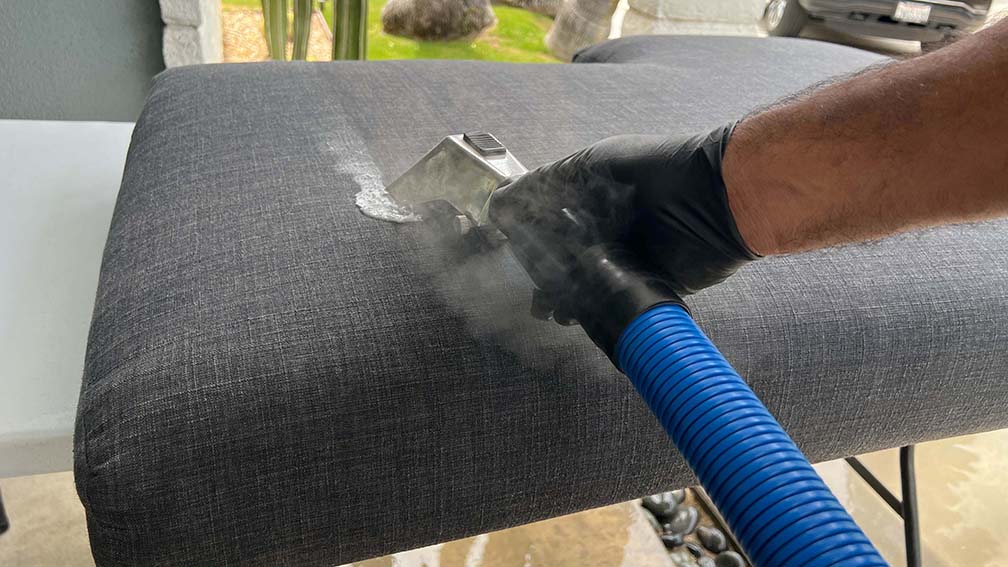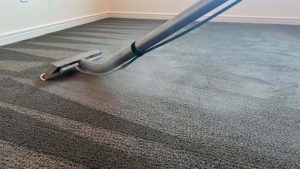Dust mites are responsible for 25% of all allergies and are the most important cause of asthma worldwide. These sources further indicate that perhaps 15-20% of the earth’s population is severely allergic to dust mite allergen! Physician organizations such as the American Academy of Allergy Asthma and Immunology (AAAAI) states that dust mite feces are a major source of allergen found in house dust. It is clear that dust mite feces is one of the most important and hazardous allergens found in indoor environments.
Dust mites are actually arachnids and not insects. Related to spiders, dust mites are microscopic, eight- legged creatures that are 0.3mm in length (7,000 can fit on a fingernail) and are invisible to the naked eye. Dust mites live on dead human skin cells, (which comprise up to 80% of house dust!) as well as fungi and bacteria. They also live off water vapor, which we provide for them by perspiration and respiration, emitting approximately one pint of moisture per person per night. This is why mites are found even in areas of extremely low humidity and prevention strategies such as reducing humidity levels in the home are generally ineffective.
Dust mites are found in virtually all homes regardless how clean, with the principal source of exposure in the home being the bedroom. Dust mites are found primarily in mattresses, sheets and blankets, pillows, stuffed animals, carpets, curtains and upholstered furniture. The average bedroom can be infested by millions of microscopic dust mites with up to 20% of the weight of an old pillow being dust mites! In fact, while dust mites can be found throughout the home, 60% of them live in mattresses, making the bedroom the number one treatment priority.
The bedroom provides a plentiful supply of shed human skin cells, warmth and humidity, making it an ideal environment for dust mites to thrive and multiply in. And, given that we spend up to one-third of our lives in the bedroom, we are also exposed to this highly potent allergen for long periods of time, increasing the likelihood of developing or aggravating allergic diseases. www.masterblend.net 5© MasterBlend 2003A dust mite will produce 20 to 100 fecal pellets per day. That’s 200 times its own body weight in feces during its short lifetime! If dust mite pellets were the size of golf balls, the average queen size bed would have a pile of pellets 70 feet high! A female dust mite will also lay 100 eggs during its approximately ten-week lifetime, with a new generation being produced about every three weeks.
During the night, most people toss and turn up to 60 or 70 times. This expels dust mite feces into the air from bedding and pillows. These allergens can then stay in the air for up to two hours. Once airborne, these potent allergens are inhaled where they can cause allergic illness in the first place and stimulate allergic reactions and asthma attacks in those that already have developed allergic disease. Other activities such as walking, vacuuming (with most vacuum cleaners) and changing bed linens easily stir up dust mite allergens. Dust mite levels are on the rise but no one is really sure why.
In 2002 the National Institute of Environmental Health published the results of a three- year study determining that 47% of North American homes have bedding containing enough dust mite allergens to cause allergies. Of these homes, 24% had levels that were five times greater than the threshold to cause allergic reactions. It is speculated that this rise is due to construction of “tight”, energy efficient homes and offices, which reduces ventilation and increases humidity as well as the popularity of cool water detergents and cold water washing (hot water washing kills dust mites).
Some authorities suspect the prevalence of wall-to- wall carpeting is also a factor in the increasing levels of dust mites. This hypothesis was put to the test in Sweden over 10 years ago. At that time in Sweden it was thought that carpet contributed to the development of allergic illnesses. Installed carpet was banned from public buildings and its market share went from 40 percent to 2 percent today. During that same time period, allergic cases increased 600 percent! Now Swedish authorities believe that the increase in allergies was due to poor indoor air quality. Unfortunately, this assessment comes a little late for the Swedish carpet industry.
As we know now, carpet likely acts as a filter or reservoir that holds indoor pollutants until they can be removed from the environment by cleaning. Still, physicians and medical organizations often recommend minimizing the use of carpets andupholstered furniture, something that you as a cleaning and indoor environmental professional will need to be prepared to refute. Laurence Lee, a Certified Industrial Hygienist at Argus Pacific has even found high levels of dust mites in office work places. It is being increasingly suspected that work environments are also causing and aggravating allergic conditions.




